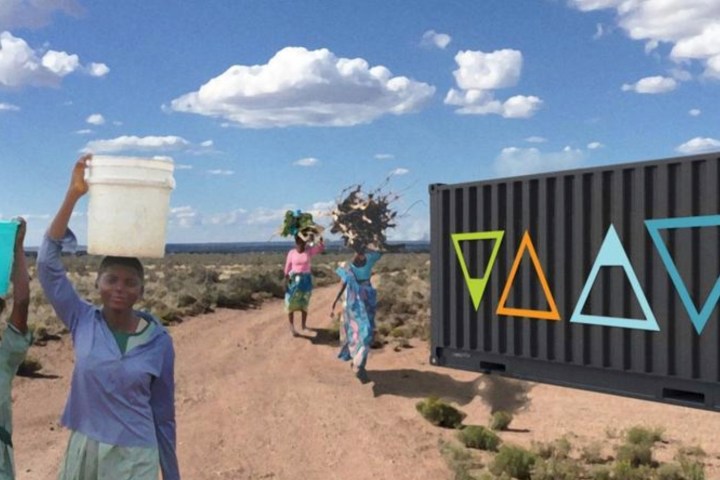
Could the solution to a lack of clean drinking water in parts of the world be an artificial cloud inside a shipping container? It sounds crazy, but it’s the revolutionary concept which just won the $1.5 million Water Abundance XPrize, a contest designed to reward the creators of a sustainable and scalable approach to collecting water from the air at low cost.
The winning technology, called WeDew (a name derived from the more unwieldy “Wood-to-Energy Deployed Water”), combines a device called Skywater, which creates artificial clouds, with a sustainable method of generating power through burning wood chips or other biomass. It can reportedly create enough water — around 2,000 liters per day — to support 100 people.
“[Our technology relies on] the Atmospheric Water Generator technology of the Skywater Machine, which uses a patented method of condensing the moisture in the air, when warm and cold air meet, similar to the way clouds are formed in nature,” David Hertz, team lead for the winning Skysource/Skywater Alliance team, told Digital Trends. “We powered the system using 100 percent renewable energy in the form of [a] biomass gasification system from All Power Labs, and captured the waste heat and the moisture contained in plant matter to create an augmented environment which made an ideal mic climate for maximum water production.”
The team hopes that the WeDew system can be used as a distributed point-of-use water and energy solution in disaster relief zones, as well as in parts of the world where clean water is never in regular supply.
“Using an intermodal shipping container allows for easy transport and mobility,” Hertz continued. “This self-contained unit can provide rural electrification, potable water, and even refrigeration. What’s more, the byproduct [known as] bio-char is a way to sequester carbon from the atmosphere, and put it in the ground for beneficial soil enhancement.”
The team is using its generous prize money to develop and deploy units of the technology all over the planet, working with nonprofit organizations to do so.
“The XPrize is akin to winning a Nobel prize, but for technology,” Hertz said. “It is a huge honor and a privilege to have been awarded the Grand Prize of the Water Abundance XPrize. It is tremendously rewarding to have your concept and engineering validated by experts globally — and to have been successful from over 98 teams from 27 countries addressing this important issue is humbling.”
Editors' Recommendations
- How powerful is the M1 Max’s GPU? Estimates say possibly more than a PS5
- Glitches could make SSDs on new M1 Macs die early
- Nvidia GeForce Now cloud gaming is $5 a month with ray tracing and 1,000+ games


